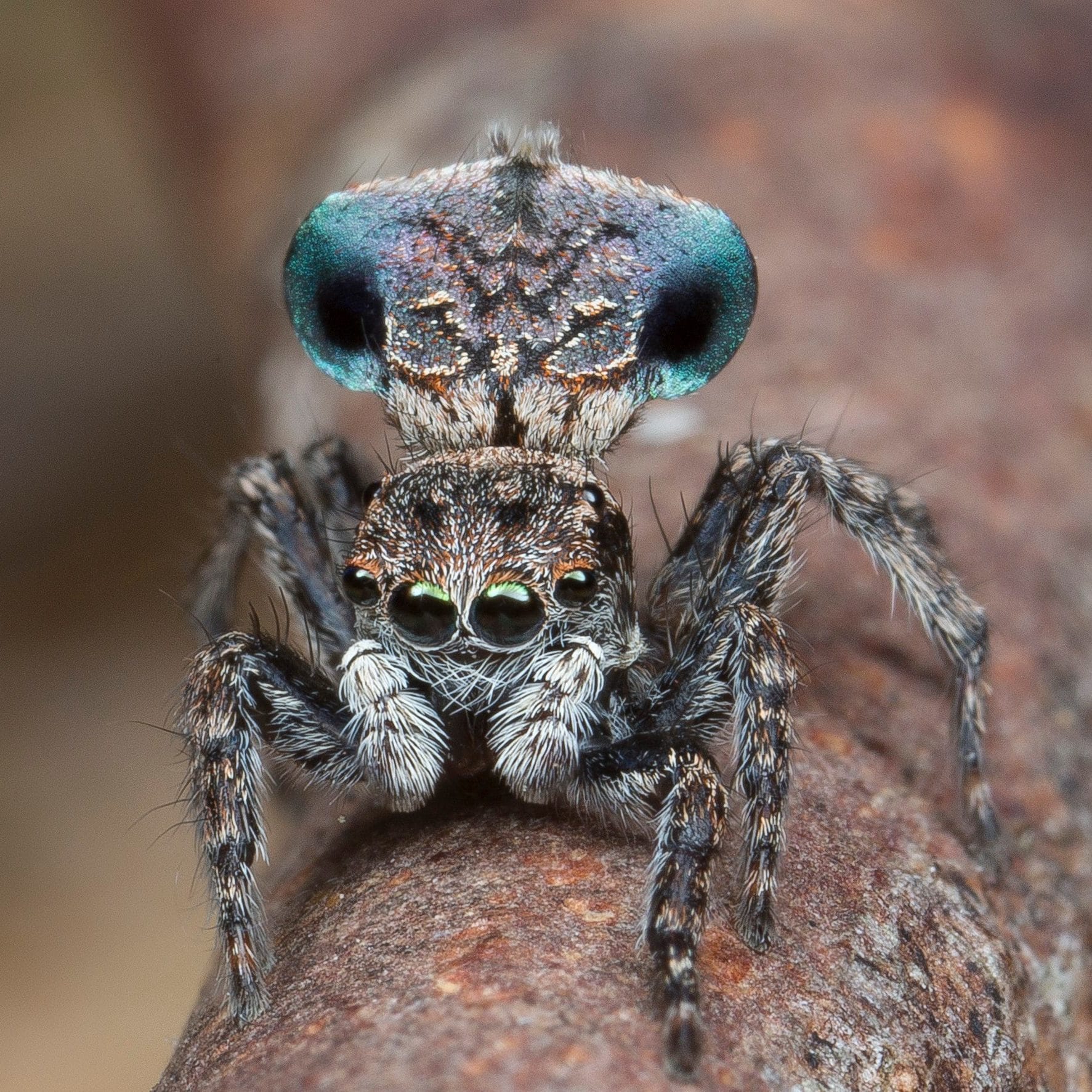From pretty to painful: Seven bizarre new creatures
🔗 [SYSTEM UPDATE] Link found. Timestamp incremented on 2025-11-26 13:55:13.Two new species of the mesmerising peacock spider are among a clutch of new species discovered recently. AMELIA LIM reports.


By AMELIA LIM
Eight-legged enthusiasts would be delighted with the recent discovery of two new species of the mesmerising peacock spider in southeastern Australia.
However, each year thousands of interesting new species are identified. From Harry Potter-inspired spiders to a phallus-shaped worm, here are our seven favourite recently discovered species.

1 and 2. Peacock spiders
Known for the brightly coloured fans on the male peacock spiders, the Maratus breed have often captured the public’s attention in the past, with a video of the mating ritual between one of the subspecies going viral in 2015.
The various hues of blue, orange and black markings found on the male Maratus nimbus are said to resemble clouds across the sky at dusk. Whereas the Maratus sapphirus was named not only after the sapphire jewel-like markings on the fan of the males, but also after Sapphire Bay in New South Wales where it was found.

The new discovery comes shortly after five new species were found last month in Western Australia, however scientists believe there are still more subspecies to be found. The minuscule peacock spiders are difficult to spot, with the biggest subspecies measuring less than 1cm.
“Close-up, these spiders are incredibly colourful and conspicuous, but they are also very, very small, and perhaps it’s no surprise that arachnologists have simply missed them (when) they search for new spiders in the bush,” Melbourne University BioSciences Professor Mark Elgar said.“Importantly, bright colours can also act as camouflage – for example, if you look at paintings of parrots against a plain background they seem incredibly colourful and conspicuous. But these birds can be quite inconspicuous in the trees because the colours break up their body shape,” he said.

3. Aragog’s twin
The Lycosa aragogi wolf spider was discovered in the hilly regions of Iran and is named after the fictional spider Aragog from the Harry Potter movies, because of their uncanny resemblance.
Like most wolf spiders, it is a feisty hunter that preys on other small insects. Even though L. aragogi is venomous, the venom is not a threat to humans as it is too weak to do major damage to the human body.

4. The wolf in sheep’s clothing
The Zodariidae Habronestes is a newly discovered species of ant spider found in Cape York Peninsula, Queensland.
The venomous spider only poses a threat to the ants it feeds on as the smart camouflage allows the spider to blend in seamlessly with the ants, making it easier for the hunter to grab its prey.

5. Sorting hat spider
Discovered in India last year, the Eriovixia gryffindori is an adorable spider that garnered a lot of attention online when the photo (above) was shared on Twitter.
Affectionately known as the sorting hat spider after the Harry Potter movies, the tiny arachnid of just 2mm blends perfectly into dried leaves where it hides during the day.
Only the female of the species has been found so far, and scientists are still learning more about this mysterious critter.

6. Amphibious giant centipede
Skinny dipping at the waterfalls in Thailand or Laos at night, or even during the day, is probably a bad idea when there is the possibility of the Scolopendra Cataracta lurking in the waters. Officially named as a new species last year, this centipede is literally the stuff of nightmares, far surpassing its cousins.
Unlike other centipedes that can only swim by staying on the surface and keeping their head out of the water, this beast is a powerful swimmer that is able to dive as well.
The armour plating that the centipede is encased in is hydrophobic, allowing the centipede to dry quickly when it is back on land. The only reassuring thing is although the bite from the giant centipede is painful, it is usually not life-threatening.

7. Phallus-shaped worm
There are over 160 species of peanut worms recorded but Australian scientists believe this is a new subspecies that lives nearly 4000km in the abyss off the eastern Australian coast.
In fact, the recently discovered Sipunculus is so new that it has not even been named yet.
Little is known about this bizarre creature so far, but scientists believe that even though it is classified under the Sipunculus family, there would be some differences between it and the peanut worms that reside in shallow waters.





